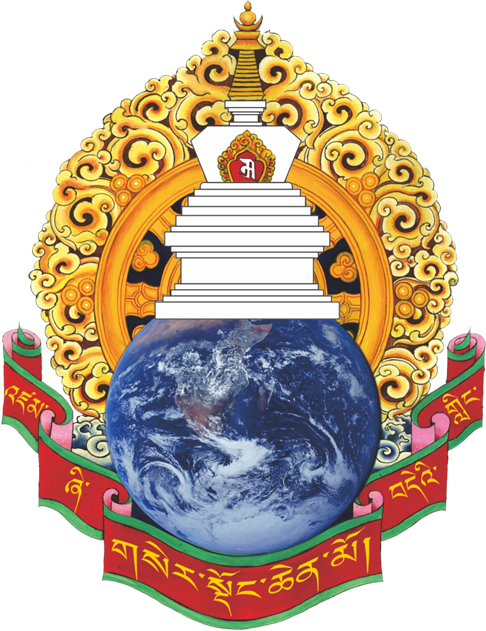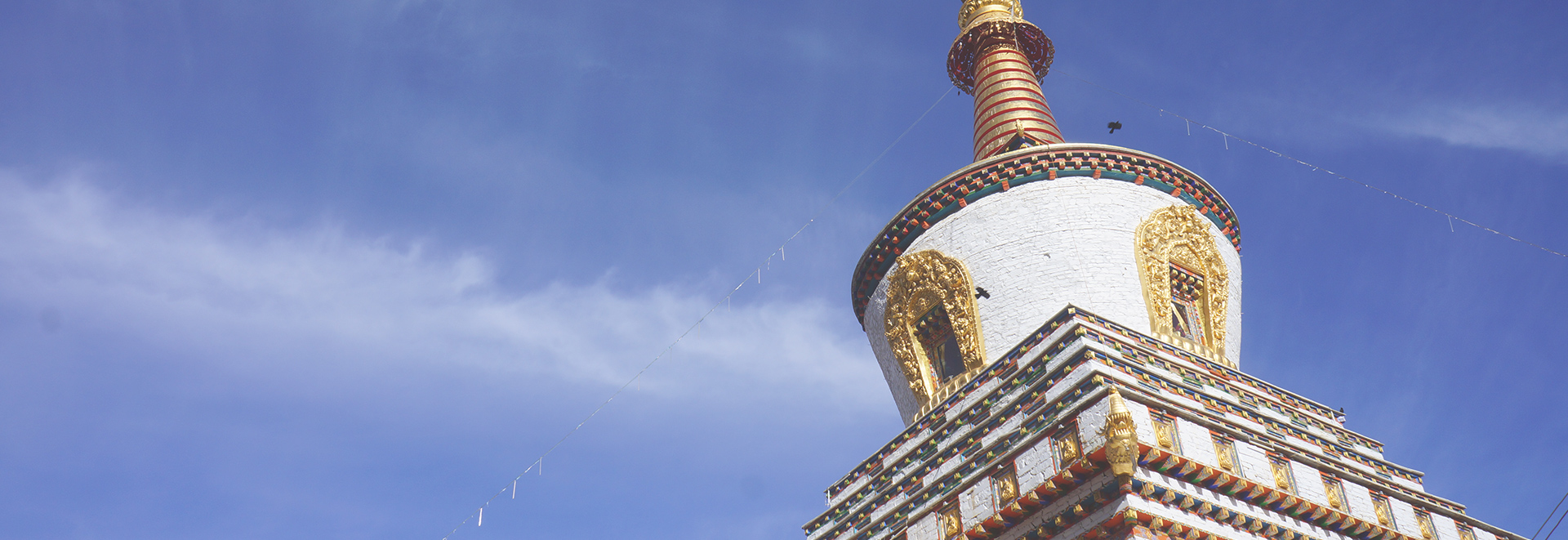Longchen Nyingtig Lineage
LINEAGE

KYABJE Chatral Sangye Dorje Rinpoche is one of the very few great masters of the Longchen Nyingthig lineage still living.
Rinpoche was born in the Abse tribal group of Nyak-rong Province of Kham and soon migrated to Amdo with his tribal group.
He received the transmissions of the ter cycles of Düdjom Lingpa (1835–1903), Sera Khandro, and others from the great master Sera Khandro Dewe Dorje (1899–1952?) herself and Tülku Dorje Dradül (1891–1959?), the youngest son of Düdjom Lingpa.
At the age of fifteen, he abandoned his ties with his family and went to many teachers to study and practice. He gave up riding and traveled on foot. He refused to enter houses or tents of household people, staying only in hermitages, caves, or his own little tent.
From Kathok Khenpo Ngawang Palzang (1879–1941) he received the transmissions and teachings of Longchen Nyingthig and many other teachings. Khenpo became his most important root master. He also received many transmissions from Khyentse Chökyi Lodrö and other masters of Dege. In Central Tibet, he became one of the principal disciples of Kyabje Düdjom Rinpoche, the tülku of Düdjom Lingpa.
Rinpoche transmitted rare teachings to Shuksep Lochen, Khyentse Chökyi Lodrö, Düdjom Jigtral Yeshe Dorje, and many other important masters. Gyaltsap Redring (d. May 8, 1947), who was then the regent of Tibet, invited Rinpoche to Lhasa and received many transmissions and instructions on Dzogpa Chenpo meditation from him. As a result, a large number of people from the nobility and ordinary walks of life flocked to Rinpoche for teachings with offerings. He saw this as a distraction from his path and, suddenly leaving everything behind, ran away to the caves in the mountains blessed by Guru Rinpoche and other masters of the past. He then lived as a hermit for decades and became known as Chatral, a hermit, or one who has abandoned mundane activities.
At the end of the 1950s, he moved to Bhutan and then to India. He restored a simple temple above Jor Bungalow village near Darjeeling and started a three-year drupdra, where meditators trained in Longchen Nyingthig practice. A drupdra is a meditation retreat school where a group of people go into seclusion for one year, three years, or more. Today there are many drupdras all over the world established by Tibetan lamas, but when Rinpoche built this drupdra, it was the only one established by a Tibetan refugee lama.
Rinpoche also built many temples, stūpas, and a number of other drupdras in Nepal and India. Today, he lives primarily at Pharping, an important pilgrimage place in Nepal blessed by Guru Rinpoche.
Rinpoche resists any involvement in monastic or bureaucratic structures and maintains a hermit tradition. He has numerous disciples from Tibet, Bhutan, and Nepal as well as some from the West. Rinpoche and his consort, Kamala, a daughter of Tertön Tulzhuk Lingpa, have two daughters, Tārādevī and Saraswatī, a tülku of Sera Khandro.
On November 16, 1968, Father Thomas Merton met Rinpoche and described the meeting as follows: “The unspoken or half-spoken message of the talk was our complete understanding of each other as people who were somehow on the edge of great realization and knew it and were trying (somehow or other) to go out and get lost in it—and that it was a grace for us to meet one another.”
Harold Talbott, who was present at their meeting, recalls Merton remarking to him after the meeting: “That is the greatest man I ever met. He is my teacher.”
*Above Contents from Masters of Meditation and Miracles: Lives of the Great Buddhist Masters of India and Tibet by Tulku Thondup (1999).


